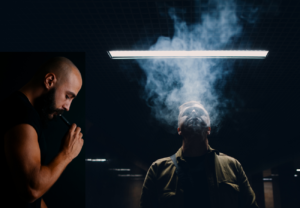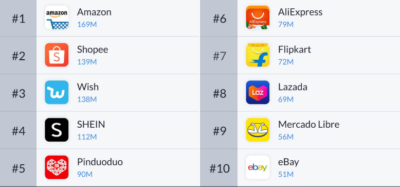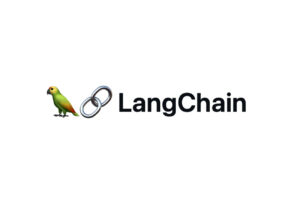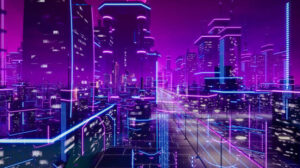What is Eye Protection?
By definition, Eye protection is a type of personal protective equipment (PPE) designed to prevent injury to the eye. Not to mention, the eyes are one of the most important organs as well as vulnerable parts of the human body.
Eyes are easily injured by many things such as small particles, chemicals, biological agents, strong visible light and non-visible rays.
With this in mind, our eyes should be protected by using appropriate eye protection.
Selecting the most suitable face and eye protection should take into consideration the following elements:
- Firstly, they should fit properly and be reasonably comfortable to wear,
- Secondly, they should be durable and cleanable,
- Have an ability to protect against specific workplace hazards,
- Additionally, they should provide unrestricted vision and movement, and
- Finally, they should allow unrestricted functioning of any other required PPE.
Eye injuries in the normal day and especially in the workplace are very common.
However, safety experts and eye doctors believe that the right eye protection can lessen the severity or even prevent 90 percent of these eye injuries.
A revised guide on Eye Protection and Safety Measures - Image by Tumisu from Pixabay
Face and Eye Protection Bone Structure
Notably, the bone structure of your face helps protect your eyes from injury due to impact from large or even minor objects.
And in that case, eyelashes help protect against injury from small objects, but eyes are still very prone to injury if proper precautions are not taken to prevent accidents.
Eye injuries are a serious matter. For one thing, not only can an eye injury be painful, but if severe enough could cause a loss of vision.
For instance, glass fragments can be very damaging to the eye, and glass is very difficult to locate and remove, especially when in the field.
Important to realize, windshield repair resin and headlight restoration chemicals may also cause damage to the eye.
And even the most careful technician may fall victim to a defective bottle tip, failed injector seal, or any number of other unforeseen accidents.
Safety Tip- Safety Glasses and Their Importance
Why is Eye Protection important?
Safety glasses are very important because a lot of workplace injuries that occur are eye-related.
In reality, most injuries are easily avoidable by taking a couple of preventive measures. The simple fact is that this is mainly contributed to the lack of training and human negligence.
The type of eye protection used depends on the type of hazard that may be present.
Some of the common hazards to eyes derive from the following activities:
- Splashes from chemicals, hot liquids, and molten metals, detergents, cleaning liquids, solvents or other harmful solutions
- Dust, dirt, metal or wood chips resulting from chipping and grinding activities
- Intense light, harmful rays from the use of arc welding and lasers
- Bigger objects flying or swinging into the eyes, impacts (blunt force)
Chemicals or foreign objects in the eye and cuts or scrapes on the cornea are common eye injuries that occur at work.
Other common eye injuries come from splashes with grease and oil, burns from steam, ultraviolet or infrared radiation exposure, and flying wood or metal chips.
Eye Protection Against Radiant Energy
During welding and cutting in any enclosed or even open yard activities, eye protection against radiant energy is very important.
As a matter of fact, electromagnetic energy given off by an arc or flame is commonly known to injure workers’ eyes. A scientific aspect that is also known and referred to as radiant energy or light radiation.
For protection from radiant energy, workers must use personal protective equipment, such as safety glasses, goggles, welding helmets, or welding face shields.
This equipment must have filter lenses with a shade number that provides the appropriate level of protection.
A shade number indicates the intensity of light radiation that is allowed to pass through a filter lens to one’s eyes.
Therefore, the higher the shade number, the darker the filter and the less light radiation that will pass through the lens.
This requirement applies to the employees performing the work and to personnel observing the operation; for example, a fire watch or an assistant.
Types of Face and Eye Protection Gears
In addition, to the above illustrations, health care workers, laboratory and janitorial staff, and other workers may be at risk of acquiring infectious diseases from eye exposure.
Some infectious diseases can be transmitted through the mucous membranes of the eye.
This can occur through direct exposure to blood splashes, respiratory droplets generated during coughing, or from touching the eyes with contaminated fingers or other objects.
Having said that, therefore, some of the most common types of face and eye protection include:
1. Eye Protection Dust Goggles
Also known as Direct Ventilated Goggles, Dust Goggles, are tight-fitting eye protection designed to resist the passage of large particles into the goggles.
2. Eye Protection Safety Glasses
Another important point, safety glasses are more commonly used gears when it comes to general and basic eye protection.
Whereby, they have safety frames constructed of metal or plastic and impact-resistant lenses. However, side protection is required especially through the use of helmets.
3. Chemical Splash Goggles
Remarkably, these are tight-fitting eye protection that completely covers the eyes, eye sockets and the facial area surrounding the eyes.
Providing protection from any direct impact, dust, and even harmful chemical splashes.
4. Fluid Resistant Shields
These shields are fluid resistant or impervious and provide splash protection from biological material.
Medically or even clinically, these fluid-resistant shields are used to prevent foreign materials from eyes contamination. Such as human or non-human primate body fluids.
5. Face Shields
Equally, these shields extend from the eyebrows to below the chin and across the width of the employee’s head.
Face shields protect against potential splashes or sprays of hazardous liquids.
Please note, when worn for protection against UV must be specifically designed to protect the face and eyes from hazardous radiation.
6. Laser Eyewear
Protective eyewear is required for Class 3 and 4 laser use where irradiation of the eye is possible.
Such eyewear should be used only at the wavelength and energy/power for which it is intended.
7. Welding Helmets
A welding helmet is a type of headgear used when performing certain types of welding protective measures. Especially to the eyes, face, and neck from,
- flash burn,
- ultraviolet light,
- sparks,
- infrared light,
- and even direct heat.
Of course, they are necessary to prevent arc eye, a painful condition where the cornea is inflamed.
8. Polarized Sunglasses
Polarized sunglasses always have been very popular among people who spend a lot of time near water.
And for good reason — polarized lenses block glare from light reflecting off the surface of the water better than another type of sunglass lenses.
But sunglasses aren’t just for people who love boating, fishing or going to the beach. Anyone who is bothered by glare outdoors can benefit from these advanced sunglass lenses.
9. UV Protection Sunglasses
Yes. The sun emits damaging ultraviolet (UV) rays that can damage the eyes. And UV rays penetrate clouds, so you can get sun damage to your eyes even on overcast days.
Ultraviolet (UV) rays are high-energy, invisible light rays; sunlight is the main source of UV.
Therefore, for adequate sun protection, make sure your sunglasses block 100 percent UV, regardless of the color or darkness of the lenses. Children’s sunglasses are essential.
Here is What You Need to Know about UV Radiation
10. Welding Shields
Constructed of vulcanized fiber or fiberglass and fitted with a filtered lens, welding shields protect eyes from burns caused by infrared or intense radiant light
Additionally, they also protect both the eyes and the face from flying sparks, metal splatter, and slag chips. Particularly, produced during welding, brazing, soldering and cutting operations.
For more information, see the OSHA Eye & Face Protection Fact Sheet on Welding - PDF.
How Should I Clean My Eyes?
Computer Eye Strain Preventive Measures
Notably, with the rise in the competitive cloud computing edge, computer eye strain can be troublesome.
“For instance, I spend almost half of my day behind a computer or mobile gadget. Working myself tirelessly and clocking both my scheduled timelines, brain and even eyes capacity” as JoyceMary, a Health & Physical Fitness author at jmexclusives states.
Of course, with so much to do behind these computerized, and glass light enabled gadgets, computer eye strain comes handy.
Even though this topic sounds unfamiliar, to some, it is a risk worth a few minutes of their precious time. Especially, with consideration to our revised scientific proven and holistic practiced methods.
Important to realize, on one of our exclusive blogs by JoyceMary, we’ve discussed Asthenopia or Asthenopic (eye strain) in details.
Whereby, symptoms in the eye are responsible for much of the severity in CVS (Computer Eye Strain).
With this in mind, therefore, you’ll be able to learn more about computer eye strain and some of the preventive measures as well.
Summing Up,
Studies have shown that contact lenses are safe to wear in most hazardous environments.
Contact lenses can’t provide significant protection from eye hazards in the workplace. However, there is no evidence that wearing contact lenses increases the risk of eye injury.
If an exposure to a hazardous substance occurs while wearing contact lenses, remove the lens immediately while rinsing the eye(s).
Read more about Protecting your Eyes at Work
Resourceful References:
Therefore, it is my hope that; from the above-revised article, you’ll play safe and keep your healthy eyes in shape again.
But, not forgetting, this article is still open for more contributions and additions.
Therefore, Contact Us if you’ll have more suggestions and information in regards to the topic.
You can also share your thoughts in the comments box or even follow the useful and related links below.
- Health and Physical Fitness Guides
- Seton Safety & Protective Eyewear
- UV Radiation – What You Need To Know
- Computer Eye Strain Preventive Measures
- Does Eye Color Reveal Health Risks?







